Metadata is the foundation of a strong collaboration and portals within SharePoint. Metadata determines the quality of, content search results, content filtering, content query as well as the various workflows dependent on the content and the relevant metadata.
SharePoint has several types of columns which allow tagging/indexing your content with metadata which you can see in the image below.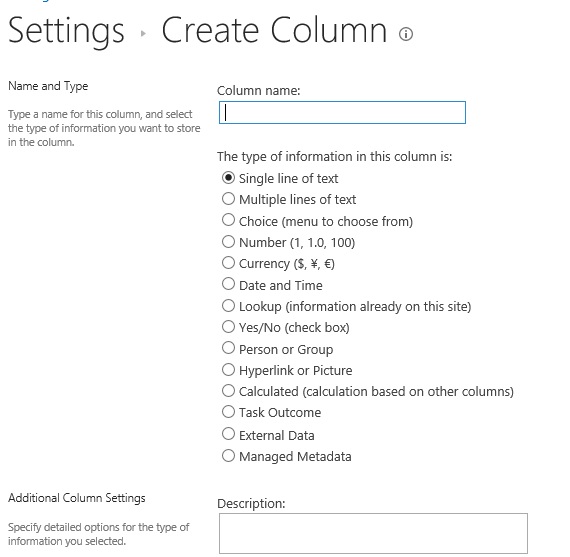
At the higher level, these columns can be divided into 2 types:
- User enters data in free style format in a text box (“Single line of text,” “Multiple lines of text”)
- User selects from predetermined list of choices (“Choice,” “Lookup,” “Managed Metadata”)
Metadata is more consistent when the user has to select from a predetermined list of choices. There are multiple types of columns which provide this feature such as choice, look up and managed metadata. These areas help you to choose the best, “choice type,” based on your requirements and the information architecture of the site.
In the below example let’s pretend there is a column named, “city,” which needs to be tagged in a particular document library and below there are different scenarios for this column based on the type of the column you choose.
Choice type
If the column city is defined as the choice type then we have to decide the what cities will be listed while we define the column itself. If the list of the cities is not going to change in the future, then this is the easiest way to define this column. If the choices are going to be Ohio cities for example, 1) Dayton 2) Cincinnati 3) Cleveland 4) Columbus, then all these choices can be entered at the time of creating the city column as choice type. Keep in mind that these choice list is not easy to change in the future if a new city has to be made available for tagging.
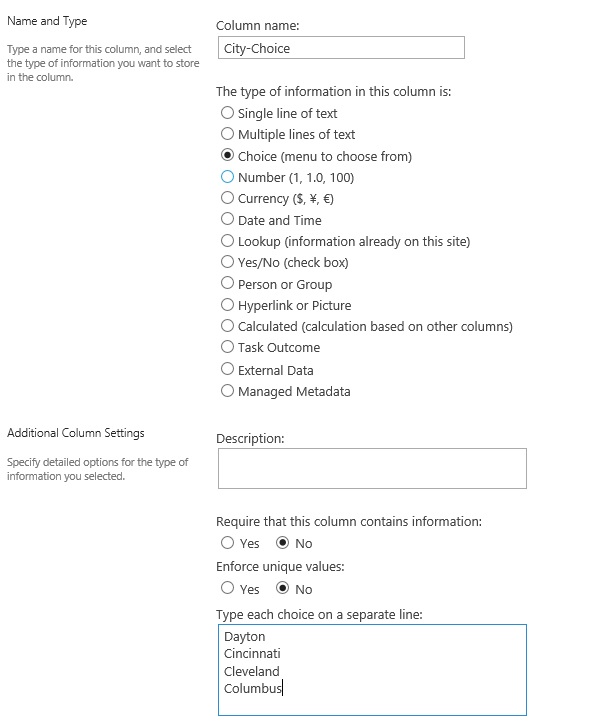
Lookup type
If the city column is defined as the lookup type, then we have to create a separate lookup custom list with all the cities in it. While defining the city column as the lookup type we need to point this column to the lookup custom list with the cities. This list can be maintained by the user itself with the right permission. If a new city has to be added to the choice of cities available, all we have to do is add another list item with the new city in the lookup custom list and this new city will be available for anyone to use as the metadata.
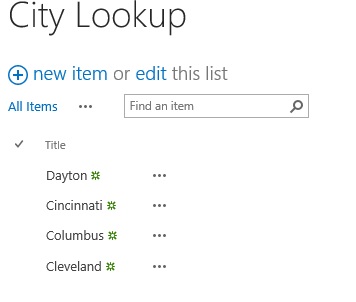
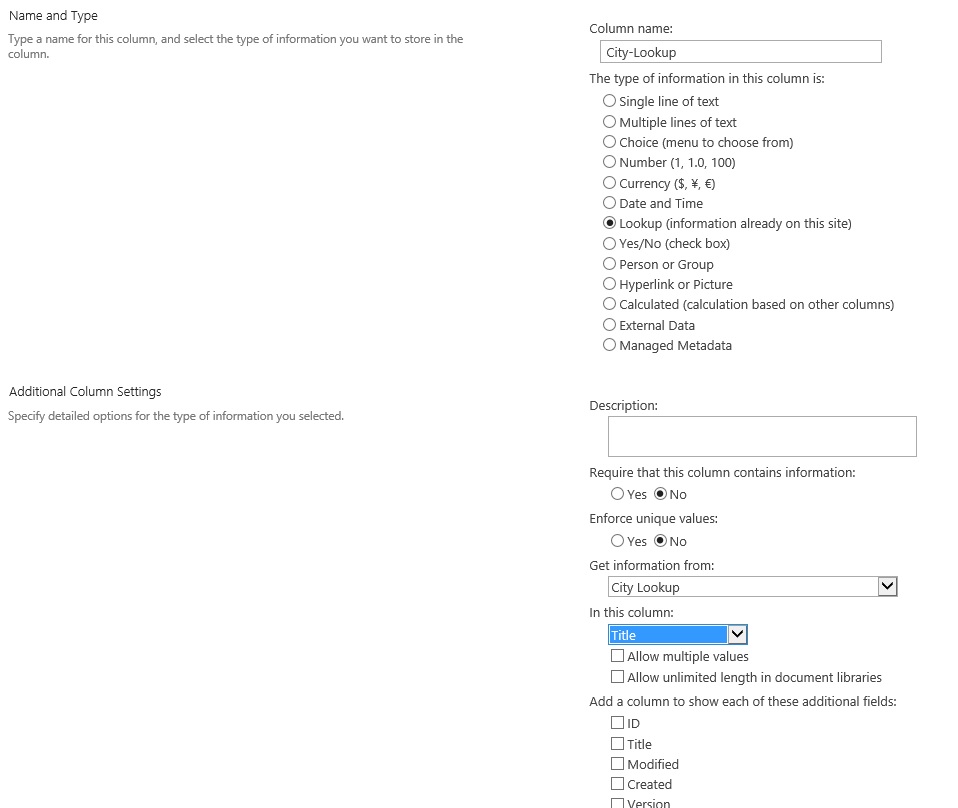
Managed metadata type
If the city column is defined as the managed metadata type, then we have to create a term set in the term store with all the cities in it. While defining the city column as the managed metadata type, we need to point this column to the term set with the cities. If a new city had to be added in the choice of cities to be available for the metadata, we can add the city just like we do within lookup type. The main difference between the choice type and metadata type is that metadata type allows synonyms. For example, if people want to identify the city names with their airport codes, the airport codes of the cities can be defined as synonyms to the cities in their respective terms in the term set. SharePoint will recognize the airport codes of the cities as the full name of the cities while entering the metadata and searching the documents with the city.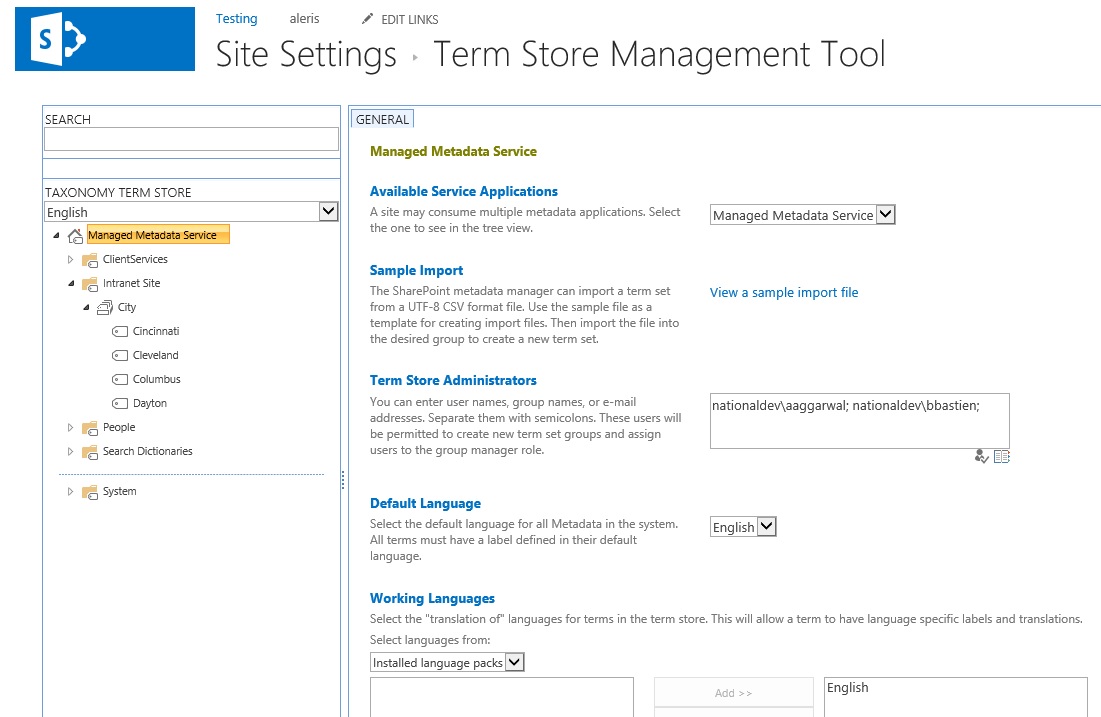
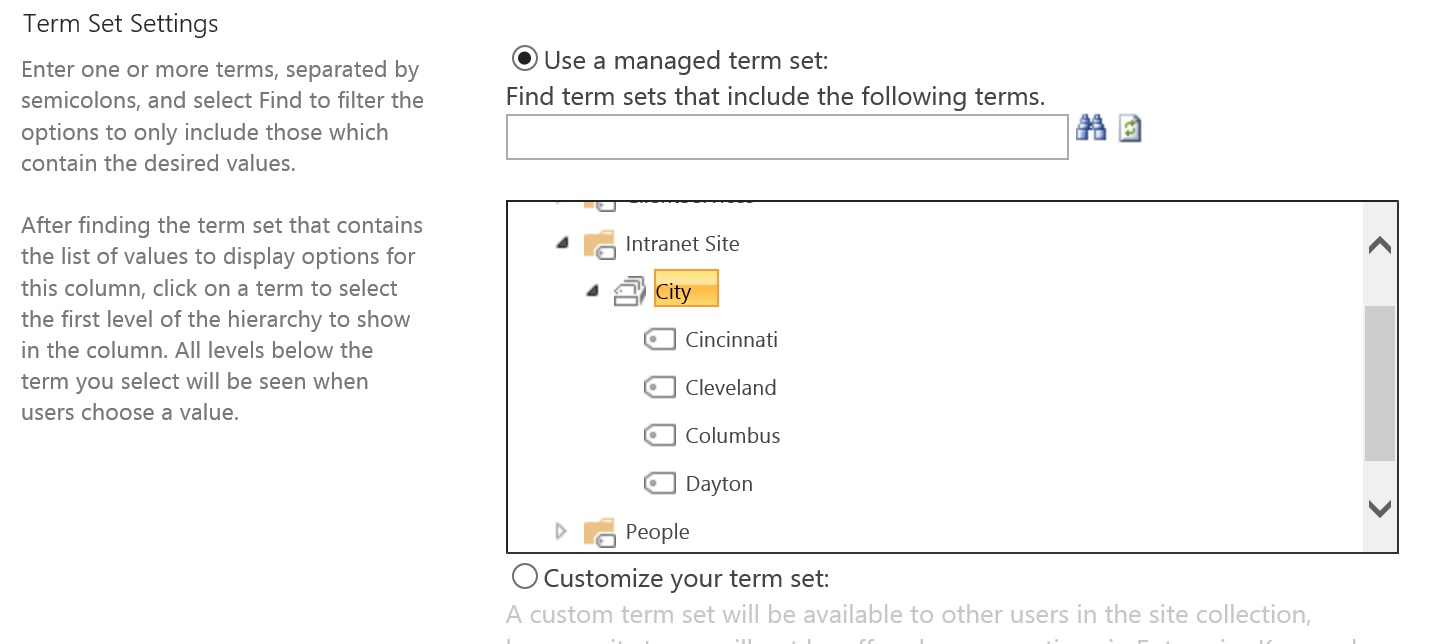
In part two of this post, the focus will be around the pros and cons of each column type above to help determine which type is right for your solution. To find out more about this or other ways that RSM can assist you with your SharePoint needs, contact RSM’s technology consulting professionals at 800.274.3978 or email us.

 RSMUS.com
RSMUS.com